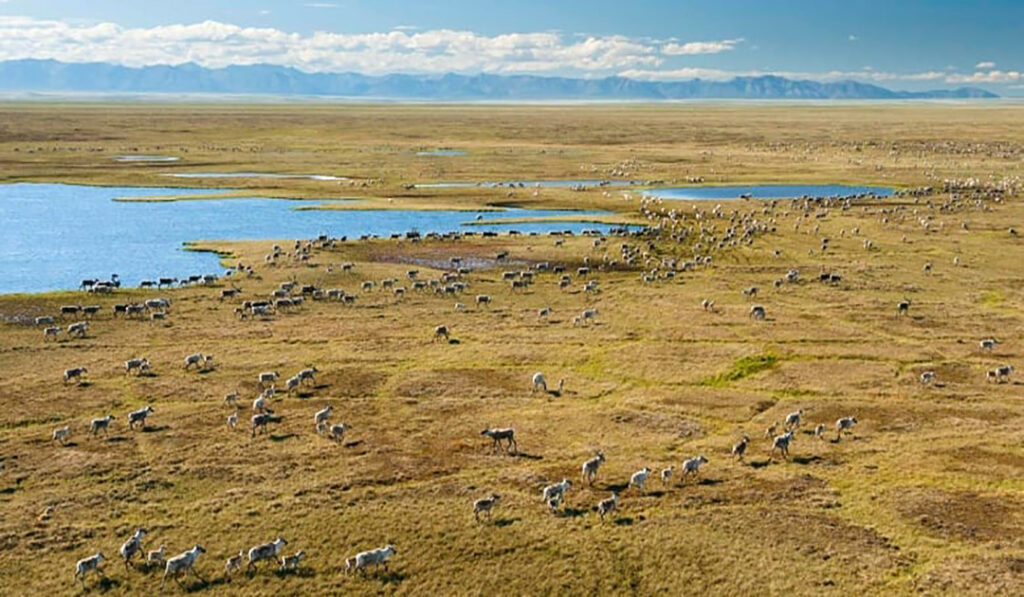
The great movements of caribou herds in northern Alaska are thousands of years old. The soil of the great prairies bears the most obvious traces of this: the females have been shedding their antlers there for more than 3,000 years.
Antlers of Grant’s caribou preserved in the soil of the Alaskan and Yukon tundra have revealed the history of their great annual migration. For the past 3,000 years, female caribou have been calving on the great coastal plains north of the Brooks Range, a large mountain range that runs east-west around northern Alaska. South of it, is the boreal forest, to the north the tundra. Scientists from the universities of Cincinnati and Fairbanks demonstrate that while Greek civilization emerged, these open plains were already being used by females for birthing. “This migration now involves about two hundred thousand individuals, one of the largest among terrestrial animals,” explains Joshua Miller, researcher at the Arctic National Wildlife Refuge and co-author of the publication in the Ecology and Evolution section of the journal Frontiers.
Some people believe that these animals migrate to avoid large predators. Wolves and bears are less numerous in this region of the Arctic. “The main predator of caribou calves during birthing is ultimately the golden eagle, and believe me, they do a lot of damage,” says Joshua Miller. Instead, he says, these habitats provide an escape from mosquitoes, which are phenomenally abundant during this period further south and could be fatal to young caribou. “The buzzing is constant if you spend the spring or summer further south of the Brooks Range,” he adds.
One of the peculiarities of this species, which allowed this discovery, is that the females lose their antlers at the time of the birth in spring, and not in winter, like the majority of the species of cervids. They stay only a few days on these open plains, then move down to the mountains, over the Brooks Range to the forests where they will breed again and winter even further south. In the spring, they move north of the Brooks Range into the Great Coastal Plains. The cycle is complete.
“There have been quite a few studies on the mining potential of hydrocarbon deposits in the subsoil of this region. This is one of the reasons that motivate this work,” explains the researcher.
Joshua Miller
“We looked at the climate and environment of these plains 1,000, 2,000 and 3,000 years ago. We found that it varied and had warmer times than currently, despite global warming,” Joshua Miller tells us. The Arctic is changing rapidly, however it appears that the coastal plains of the northern Brooks Range will remain hospitable to caribou in the future, at least for the early part of the current warming.
The fertility of the soils of these plains may depend on these herds, because the woods are an important source of phosphorus. This question, still pending, will be the subject of future studies. In the meantime, some big migrations will take place.
Camille Lin, PolarJournal
Learn more about this topic:





